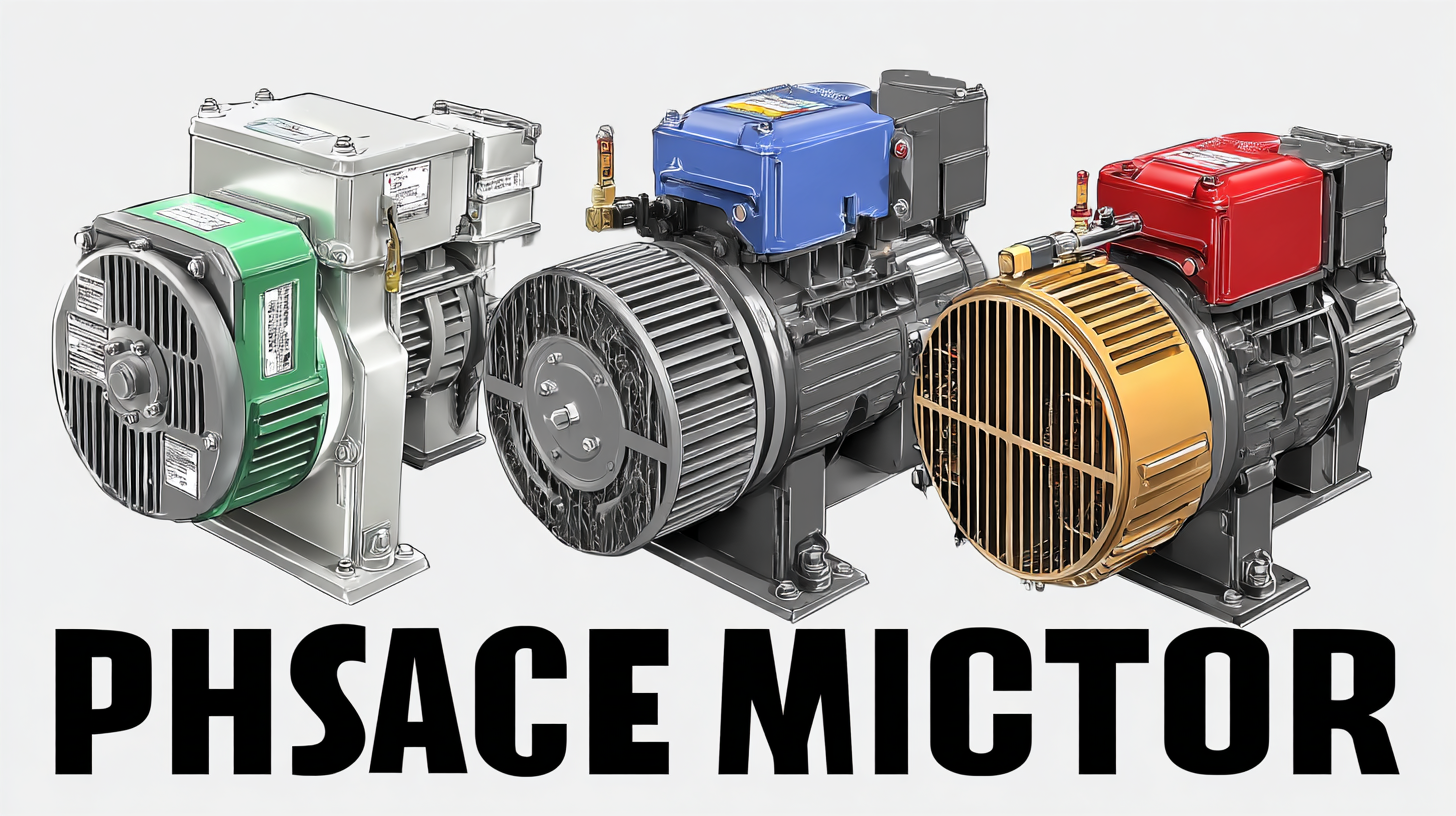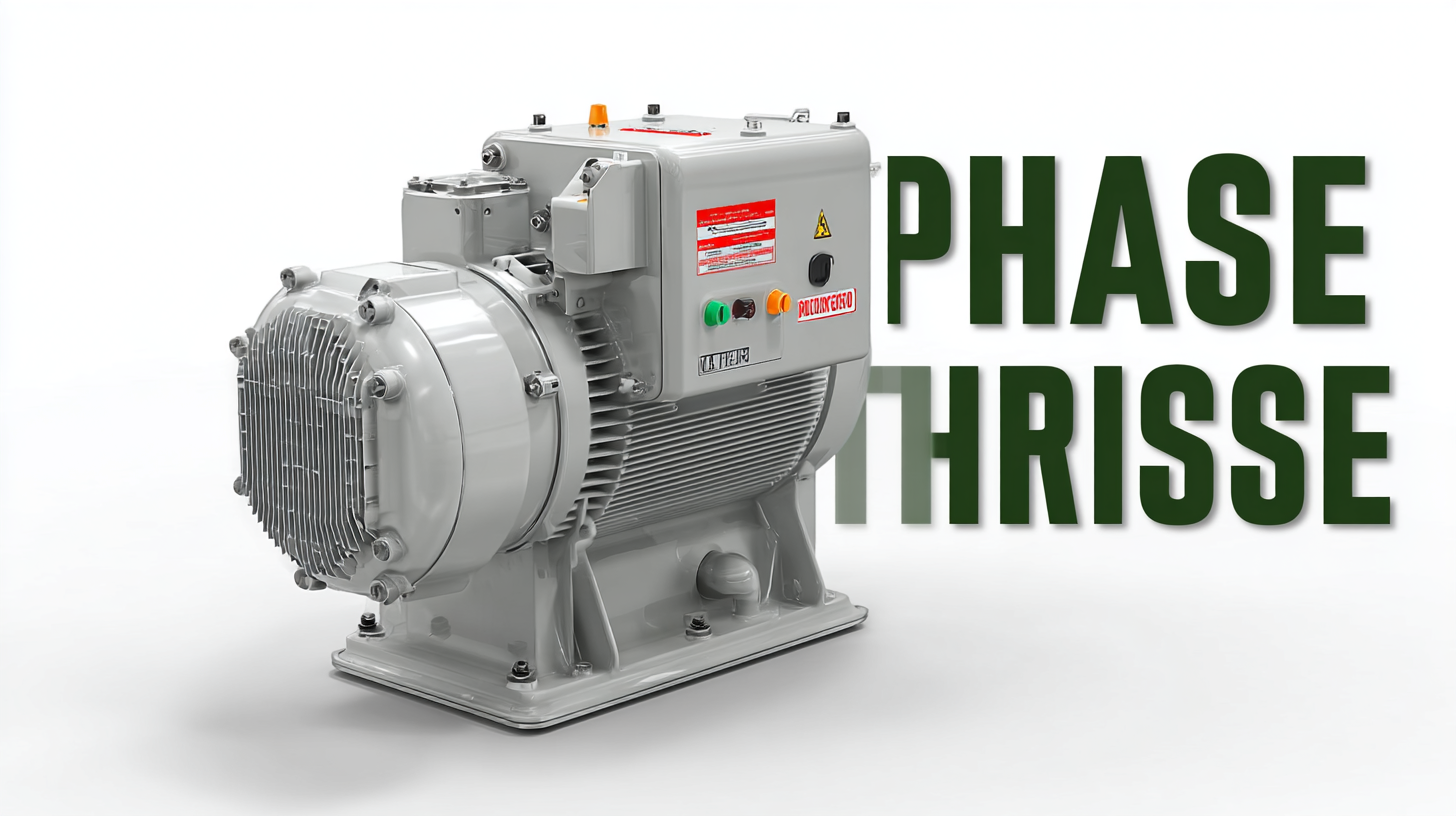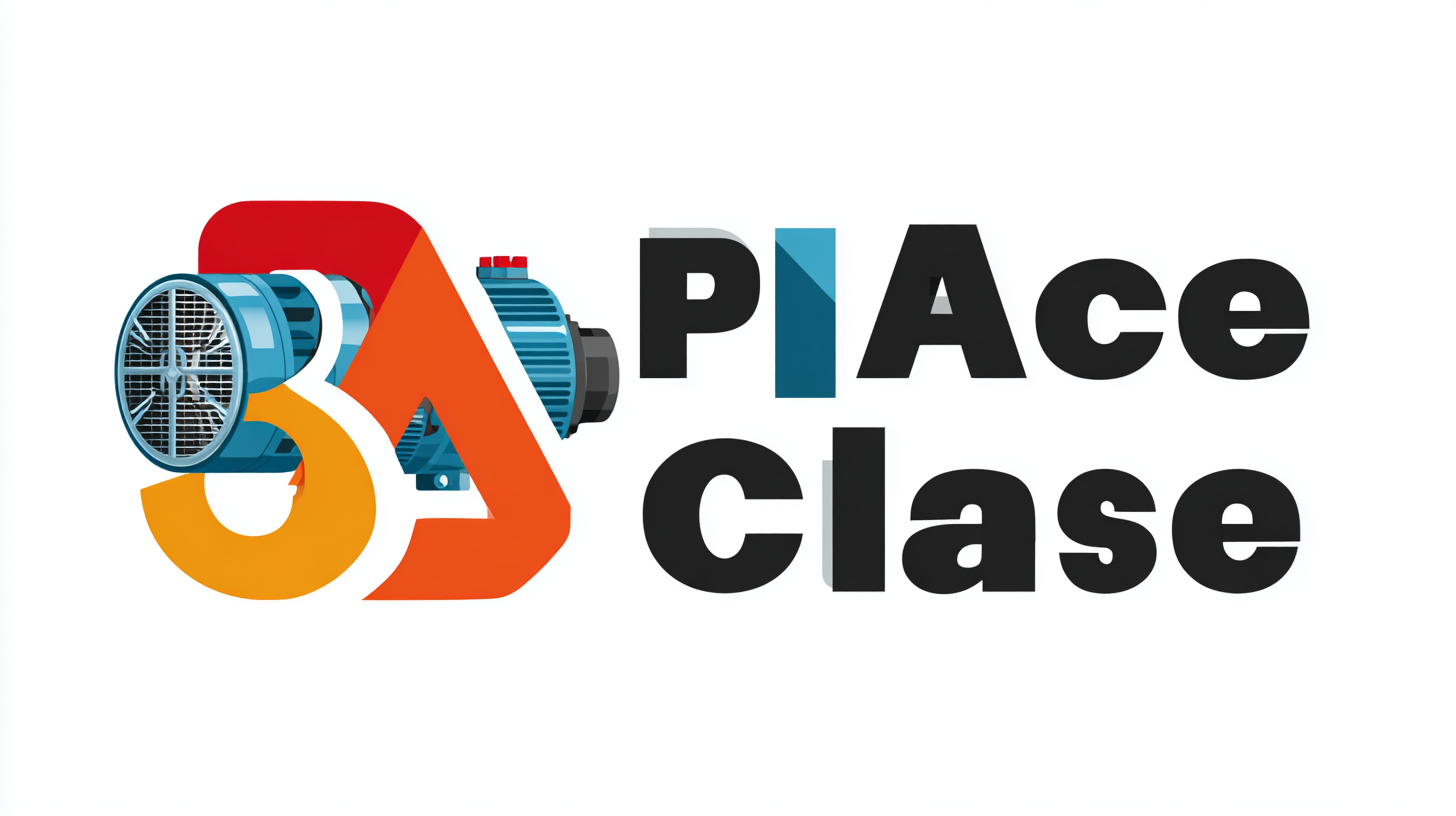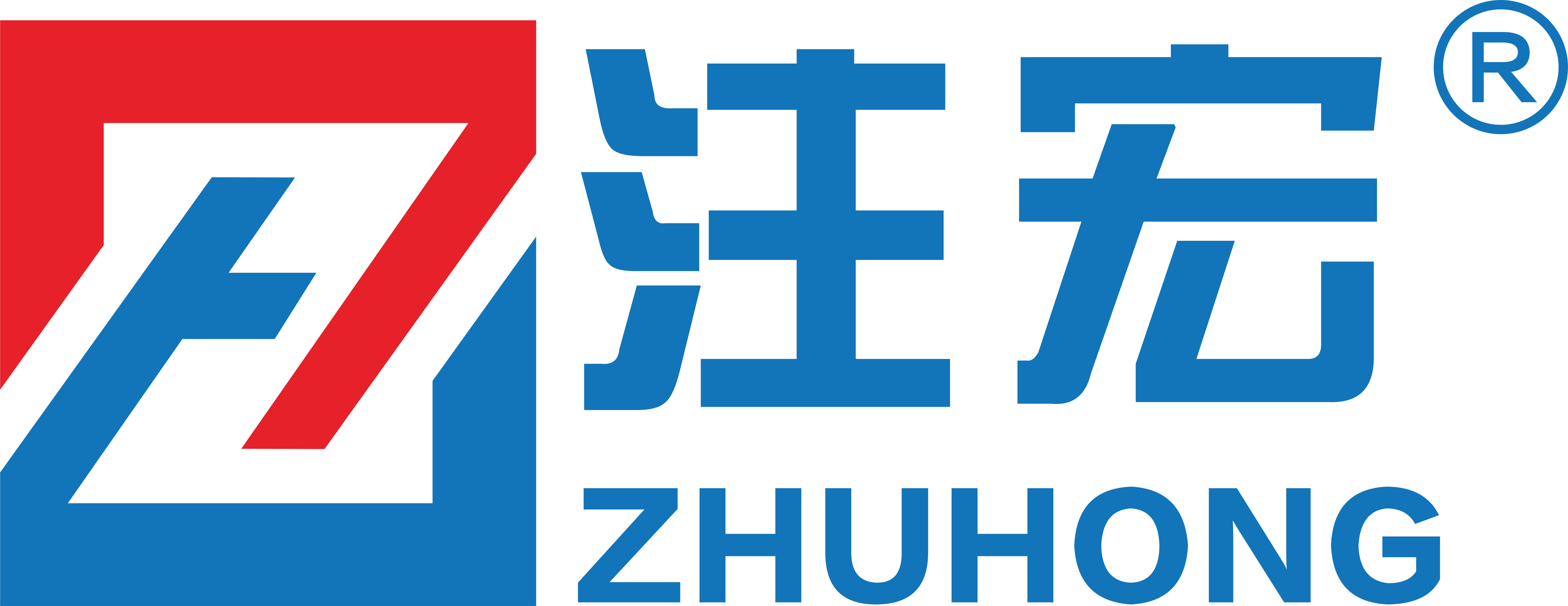
How to Choose the Best Three Phase Ac Motor for Your Industrial Needs
In the ever-evolving landscape of industrial machinery, selecting the right equipment is paramount for optimizing efficiency and productivity. Among the various types of motors available, the Three Phase AC Motor stands out due to its superior performance and reliability in demanding applications. According to a recent report by Research and Markets, the global market for three-phase motors is expected to reach USD 27.4 billion by 2026, driven by increasing automation and the demand for energy-efficient solutions. With their ability to handle larger loads and maintain consistent torque, three-phase AC motors are essential to a wide range of industries, from manufacturing to HVAC systems. However, choosing the best motor for specific industrial needs requires a clear understanding of the various types and specifications available. This blog aims to provide a detailed comparison of the features and advantages of three-phase AC motors to aid in informed decision-making for your industrial operations.

Factors to Consider When Selecting a Three Phase AC Motor for Industrial Applications
When selecting a three-phase AC motor for industrial applications, several critical factors should be carefully evaluated to ensure optimal performance. The first consideration is the motor’s power rating, which should match the specific requirements of your machinery. It's essential to assess not only the starting load but also any potential overload conditions that might occur during operation.
**Tips:** Always consult the equipment specifications and consider future scalability. Selecting a motor that can accommodate higher loads than currently needed can save costly upgrades later.
Another important factor is the environment in which the motor will operate. Motors can be subject to various environmental conditions such as temperature, humidity, and exposure to corrosive substances. Choosing a motor with the appropriate enclosure type and material can enhance its longevity and reliability.
**Tips:** Look for motors with high IP ratings for dust and moisture resistance, especially in harsh conditions. This will help minimize downtime and maintenance costs, ensuring your operations run smoothly.
Understanding Efficiency Ratings and Their Impact on Motor Performance
When selecting a three-phase AC motor, understanding efficiency ratings is crucial for optimizing motor performance and reducing operational costs. Efficiency ratings, typically expressed as a percentage, indicate how effectively a motor converts electrical energy into mechanical energy. According to the U.S. Department of Energy, a slight improvement in efficiency can lead to significant energy savings. For instance, increasing the motor efficiency from 90% to 95% can reduce energy consumption by up to 10% over its lifetime, which is important for industries that operate continuously.
Moreover, the efficiency of a three-phase AC motor can be influenced by several factors, including design, load conditions, and operating environment. Efficiency ratings are classified into different categories, such as NEMA Premium and IE3 levels, with Premium efficiency motors generally achieving over 90% efficiency. A report by the International Electrotechnical Commission (IEC) states that transitioning to high-efficiency motors can result in savings of up to 40% in energy costs, making it a vital consideration for industries aiming for sustainability and cost-effectiveness. Therefore, knowing these efficiency ratings and their implications for performance and energy expenditure is fundamental in making informed decisions for your industrial needs.
How to Choose the Best Three Phase AC Motor for Your Industrial Needs - Understanding Efficiency Ratings and Their Impact on Motor Performance
| Motor Type | Power Rating (kW) | Efficiency Rating (%) | Starting Method | Application |
|---|---|---|---|---|
| Squirrel Cage | 15 | 92 | Direct On-Line | Pumps |
| Wound Rotor | 30 | 90 | Star-Delta | Fans |
| Permanent Magnet | 10 | 95 | Inverter Driven | Conveyors |
| Dual Speed | 5 | 91 | Capacitor Start | Agitation |
| High Voltage | 100 | 89 | Soft Start | Heavy Machinery |
The Importance of Motor Size and Power Rating in Industrial Settings
When selecting a three-phase AC motor for industrial applications, understanding the importance of motor size and power rating is crucial. The right motor should not only match the operational requirements of the machinery but also contribute to overall efficiency and energy management. As industries increasingly turn to advanced energy storage systems and renewable sources, the proper sizing and power rating of motors become vital in optimizing energy consumption and minimizing operational costs.
Choosing a motor with the right specifications involves assessing the load characteristics and operational demands of the application. An oversized motor can lead to energy wastage, while an undersized motor may struggle to perform adequately, potentially leading to mechanical failure. With the latest trends emphasizing efficiency and sustainability, industries must prioritize motors that not only meet their power needs but also align with broader environmental goals, such as reducing carbon footprints and enhancing energy storage capabilities. As the industrial landscape continues to evolve, ensuring that motors are both appropriately sized and powered will be indispensable for achieving operational excellence.
Key Features to Look for in Reliable Three Phase AC Motors
 When selecting a reliable three-phase AC motor for industrial applications, several key features should be prioritized to ensure optimal performance and longevity. First, consider the motor’s efficiency. A high-efficiency motor can significantly reduce energy consumption, leading to lower operational costs and a smaller environmental footprint. Look for motors that meet or exceed established efficiency standards, such as those outlined by the NEMA or IEC, to guarantee energy savings and enhanced performance.
When selecting a reliable three-phase AC motor for industrial applications, several key features should be prioritized to ensure optimal performance and longevity. First, consider the motor’s efficiency. A high-efficiency motor can significantly reduce energy consumption, leading to lower operational costs and a smaller environmental footprint. Look for motors that meet or exceed established efficiency standards, such as those outlined by the NEMA or IEC, to guarantee energy savings and enhanced performance.
Another critical aspect to evaluate is the motor's insulation class. The insulation rating directly impacts the motor's ability to withstand heat and environmental stressors. Motors with a higher insulation class (such as Class H or Class F) offer better protection, ensuring greater durability and reduced risk of failure. Additionally, assess the motor's compatibility with variable frequency drives (VFDs) if your application requires speed control. Motors designed for VFD compatibility can enhance operational flexibility and efficiency, making it easier to adapt to fluctuating load demands in industrial settings.
Maintenance and Longevity: Ensuring Optimal Performance Over Time
When selecting a three-phase AC motor for industrial applications, maintenance and longevity are critical factors that directly influence performance. According to a report by the Department of Energy, regular maintenance can enhance an electric motor's lifespan by 40% or more. Preventative practices such as periodic lubrication, vibration analysis, and thermal imaging not only prevent unexpected failures but also ensure the motor operates at its peak efficiency, ultimately reducing operational costs.

Furthermore, the expected lifespan of high-quality three-phase AC motors is typically around 15 to 20 years, depending on the application and maintenance regimen. A study published in the IEEE Transactions on Industry Applications highlights that over 30% of motor failures are attributed to insulation breakdown, which can often be detected in the early stages through routine checks. Thus, integrating a robust maintenance schedule is paramount for industries looking to minimize downtime and maximize productivity, ensuring that their equipment continues to perform reliably over time.
-

Phone
Phone

0086-13586199782
-

E-mail
-

Whatsapp
-

Wechat
Wechat

-

Top
